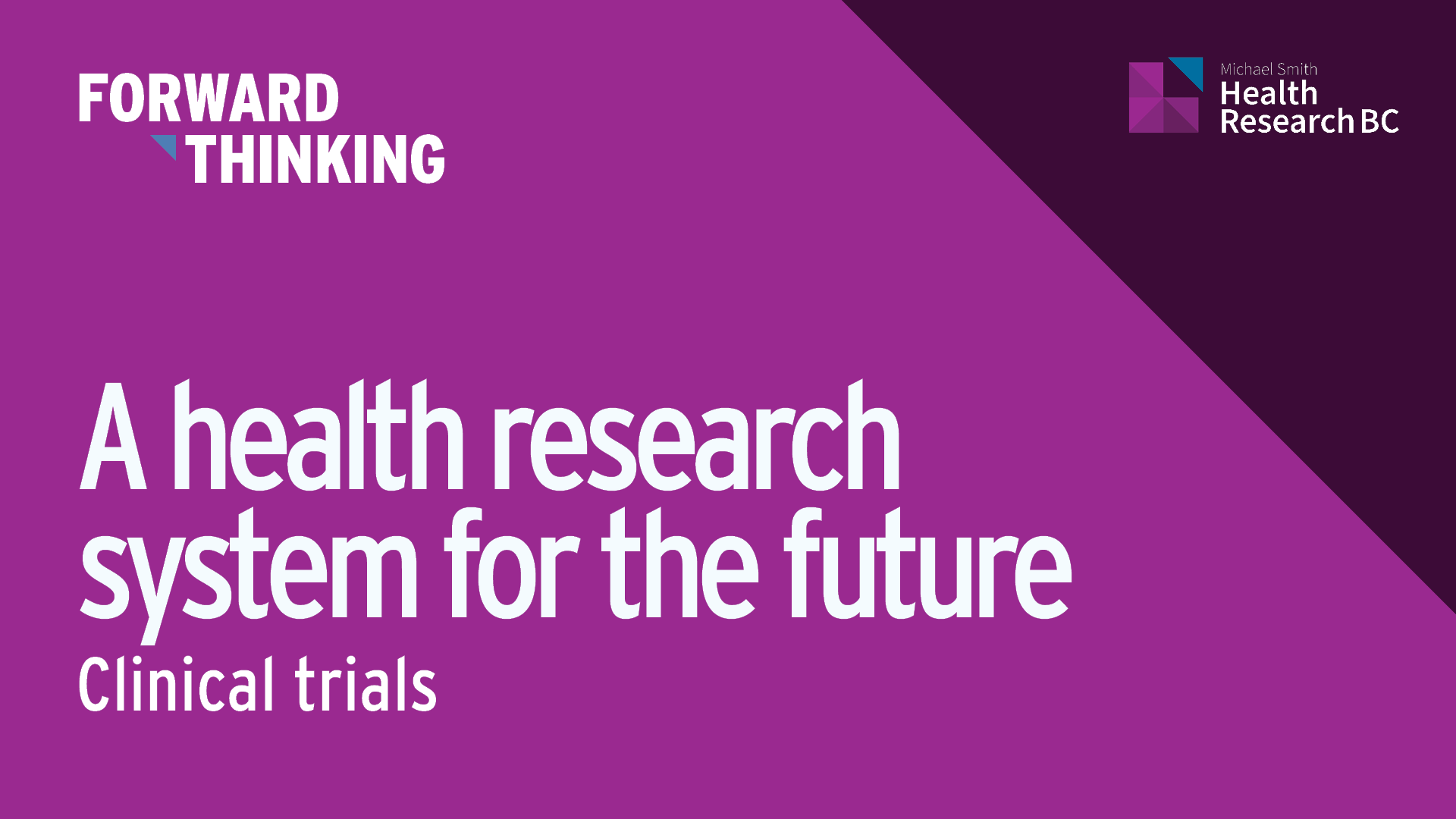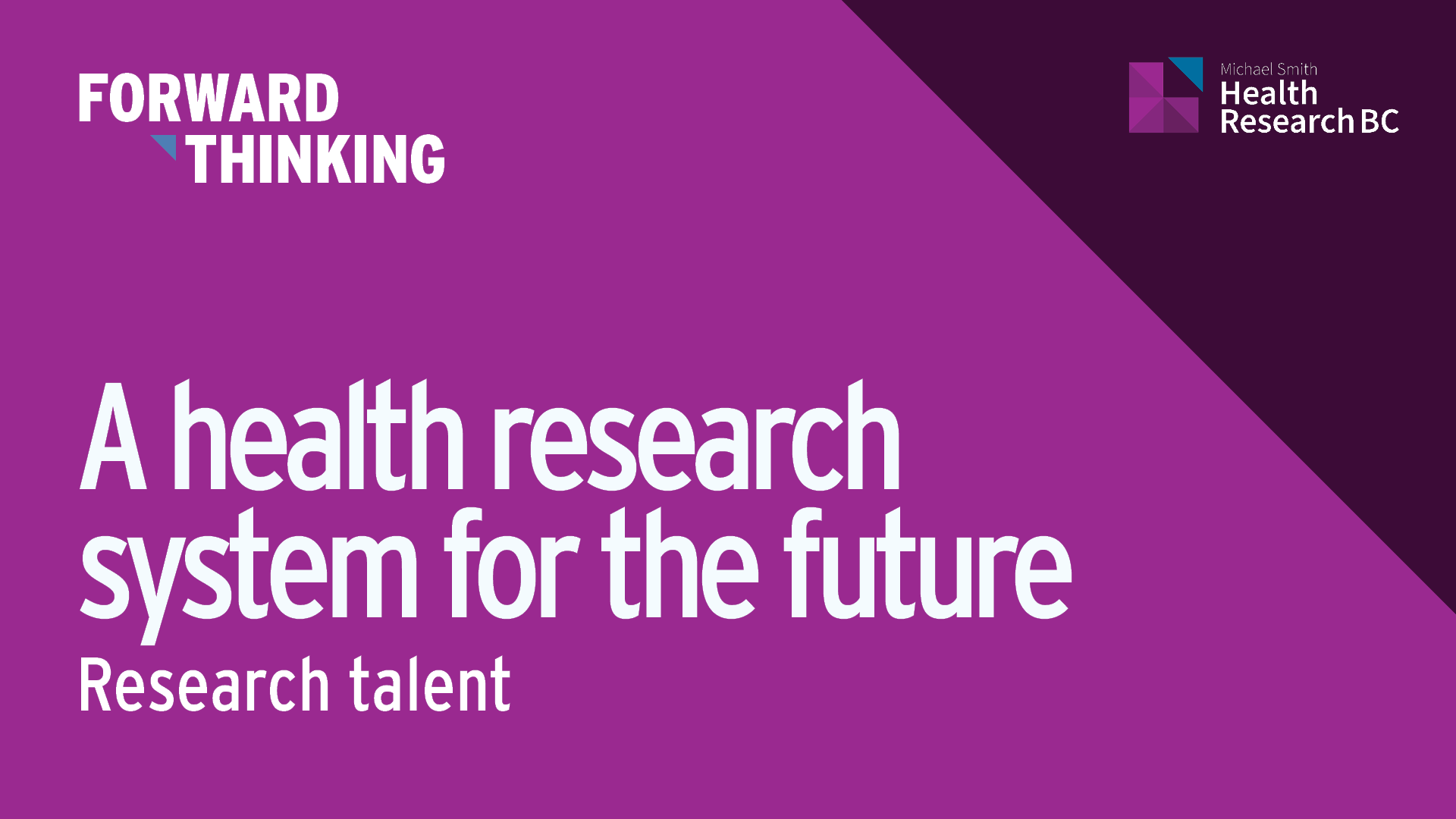Funding agency investment strategies: Where to begin
19 April 2018

MSFHR has a long track record of impactful and strategic investment in BC’s health research system. Still, as part of our ongoing efforts to grow, improve and best support BC health research, we see an opportunity to become more focused and transparent about our approach to investing in health research, and research impact.
Here, Dr. Zena Sharman, MSFHR’s Director, Strategy outlines MSFHR’s efforts to develop a more explicit investment strategy.
Forward Thinking is MSFHR’s blog, focusing on what it takes to be a responsive and responsible research funder.
Funding agency investment strategies: Where to begin
Weighing the merits of different options against your priorities and desired return on investment is a process familiar to anyone trying to figure out how to do the most with their time, money, or any other resource. This isn’t dissimilar to how research funding agencies decide what programs and activities to invest in, except instead of increased productivity or a climbing share price, the return we’re looking for is research impact: research that advances knowledge, informs decision-making, builds capacity and ultimately leads to health and socioeconomic impacts.[1]
At the Michael Smith Foundation for Health Research (MSFHR) we’ve been investing strategically in BC’s health research system for the past 17 years, an investment that continues to pay dividends for the province and for BC’s contribution to health research nationally and internationally. The return on investment is clear: our funding helps excellent researchers stay in BC where they make discoveries, publish high-impact research, secure additional research funding and train the next generation of health research talent.
Still, we see an opportunity to become more focused and transparent about our approach to investing in health research, and as a result, we’ll be developing an explicit investment strategy in conjunction with our next strategic plan.
How do funding agencies decide what to invest in?
At many funding organizations – including ours – investment decisions are most apparent in individual competitions, where peer review is used to identify the most excellent and potentially impactful research. There’s typically a strategic plan that underpins this work and identifies the goals and priorities that shape an organization’s activities, but it seems less common for funders to explain how and why they allocate their resources across an overall portfolio of investments (i.e., their programs and activities).
MSFHR’s move towards a formalized investment strategy is motivated by our commitment to meeting the needs of BC’s health research community, and being transparent about how we set priorities and balance important considerations like equity and diversity, type of research and stage of investigator career when making funding decisions.
This echoes calls from across the health research community for funders to be more transparent about our investment strategies. For example, Chalmers and colleagues recommended that funders make more information available about how we decide what research to support as part of a larger discussion on increasing value and reducing research waste.[2] In its 2017 final report, the CIHR International Peer Review Expert Panel recommended that CIHR “decide on and widely communicate about its investment strategy,” including the desired relationship between scientific excellence and impact, priorities, expectations about the purpose of peer review and a definition of and approach to equity.[3] There has even been some initial discussion about whether Canada’s health research funders should in future agree on a shared strategy.
MSFHR’s investment strategy, where do we begin?
MSFHR has a long track record of impactful and strategic investment in BC’s health research system, but articulating an explicit investment strategy is new for us. So where do we begin?
- Start with purpose: As MSFHR’s Director, Strategy I start by focusing on our purpose (why we do what we do) and then make my way to process (how we do what we do). Developing an investment strategy using this lens means our approach should be grounded in our mission, vision and mandate. To do this requires a deep understanding of the impacts we seek to achieve over the short- and long-term and how we’re uniquely positioned to achieve them, independently and in collaboration. Grounding our investment strategy in our purpose will enable clearer, more focused thinking about how to put it into action and evaluate our progress along the way.
- Account for context: We also need to account for context, and our dynamic relationships with the environment and the communities we work with. For MSFHR as a provincial funder, that means paying close attention to BC, national and international contexts, and being in continuous dialogue with our stakeholders, partners and other funding agencies. Listening to this network helps attune us to current and future challenges and opportunities, and gives us a more complete picture of the health research system we seek to support and shape.
- Focus on the core questions: Finally, we need to understand what concepts or questions might be at the core of our investment strategy. When talking to my colleagues about this, I initially framed some of my questions around achieving an appropriate balance between excellence and impact. I’m grateful they pushed back, affirming that excellence and research impact are both integral to all of our investments in research, though they might look different across health research themes or environments.For us at MSFHR, one of our core questions revolves around achieving an optimal mix of open and targeted programs. As a publicly funded agency with a mandate that spans the full spectrum of health research, it’s essential that we support scientific discovery, implementation, innovation and talent development while also strategically targeting research on specific topics or priorities.
Developing a more explicit investment strategy for MSFHR is an exciting, challenging and necessary endeavour. We see it as a valuable opportunity to achieve even greater clarity about why we do what we do, in service of the research impacts we aim to realize through our investments. Do you have thoughts on MSFHR’s investment strategy? Do you know a funding agency that’s got it figured out? (We’d really love to learn from them!) Is your organization grappling with similar challenges? We welcome your input and we’ll be sure to keep you posted on our progress.
Information MSFHR’s funding programs, application review process and funding decisions can all be found on our website.
References
- Panel on Return on Investment in Health Research. Making an Impact: A Preferred Framework and Indicators to Measure Returns on Investment in Health Research. Ottawa: Canadian Academy of Health Sciences; 2009. Available here.
- Chalmers I, Bracken M, Djulbegovic B, et al. How to increase value and reduce waste when research priorities are set. Lancet. 2014;383(9912):156–165. Available here.
- Gluckman P, Ferguson M, Glover A, et al. International Peer Review Expert Panel: A report to the Governing Council of the Canadian Institutes of Health Research. 2017. Available here.





